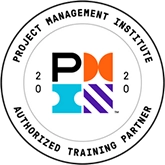What You Must Know About Stakeholder Management
Why Stakeholder Management?
 One of the most critical aspects of project management is doing what’s necessary to develop and control relationships with all individuals that the project impacts. In this article, you will learn techniques for identifying stakeholders, analyzing their influence on the project, and developing strategies to communicate, set boundaries, and manage competing expectations.
One of the most critical aspects of project management is doing what’s necessary to develop and control relationships with all individuals that the project impacts. In this article, you will learn techniques for identifying stakeholders, analyzing their influence on the project, and developing strategies to communicate, set boundaries, and manage competing expectations.
By successfully managing your stakeholders, you will be better able to keep a lid on scope creep, ensure project requirements are aligned, understand tolerance for risk, and mitigate issues that would otherwise delay the project. Good stakeholder management is a testimony to your influence in an organization, and a key component to a healthy project environment.
Stakeholder Impact on Project Success
Effective project managers understand that to get results they must create an atmosphere of enablement. This concept is reinforced in research published in The Standish Group’s famous Chaos report which revealed that the majority of information technology projects fail, and for those that succeed, what constitutes the top reasons for success. The number one reason for project success is cited as user involvement. Healthy user involvement is supported by an emphasis on quality relationships (trust and structure), expectation management (achievable metrics, timing), and clear business communications (talking and writing plainly). Other stakeholder-based contributions to project success include executive support (visible sponsorship toward the core values of the project); the emotional maturity of the project manager (ability to rally stakeholders to the common purpose); and effective use of the organization’s ecosystem (infrastructure, procurement, facilities, legal, etc.) to support the project.
Next is the process to help you define this universe of stakeholders and what is needed to gain their support.
Identify Project Stakeholders
A stakeholder is the “person, or organization that is actively involved in the project, or whose interests may be positively or negatively affected by execution or completion of the project. A stakeholder may also exert influence over the project and its deliverables.” An output of the initiation step of a project is the charter which often includes a section listing the organization’s functional areas involved in the project. So, early in the project startup process, you begin to uncover project stakeholders. If you are unsure, ask yourself who will contribute to this project, or, who will be affected by it? Think of an entire business process for contributors, or the organization's political climate for potential impacts, and don't forget to consider external partners. Work with your project sponsor and others close to the project to identify all potential stakeholders. Interview key project participants to help you uncover more stakeholders. Here is a list of common stakeholders to get you started:
Project manager |
Resource managers |
Project team members |
Senior management |
Project sponsor |
Suppliers and vendors/subcontractors |
Customers |
Community |
Support staff |
Government agencies/regulators |
Functional managers |
Media / Marketing / Public Relations |
Users |
Shareholders |
Conduct a Stakeholder Analysis
Your list of stakeholders can be very large, and you probably don't want to expend equal emphasis or energy on every stakeholder. Stakeholder analysis involves three key steps:

- Identify the relevant information for each stakeholder: relevant information are things like their particular interest in the project, their role in the project, their level of authority (position), needs, and expectations of the project.
- Identify the potential impact or support of each stakeholder: this can be simple like using two measures low and high.
- Assess how key stakeholders are likely to react to various situations: another measure like low sensitivity or high sensitivity
Your analysis can be plotted into a 2x2 grid that shows the stakeholder’s relationship to the project. This helps categorize stakeholders and determine where project management should direct its efforts. It is also a key input into the communications, risk and scope plans.
In the 2x2 grid, the X horizontal axis identifies the level of interest. This is the measure of how much they will be affected by the outcome of the project from low to high. The Y vertical axis of the grid identifies the level of power. This is the measure of how much a stakeholder can affect the outcome of a project from low to high. So in a 2x2 grid there are four squares.
- Top left is high power, low interest: stakeholders who plot to this square should be kept satisfied.
- Top right is high power, high interest: stakeholders who plot to this square should be managed closely.
- Bottom left is low power, low interest: stakeholders who plot to this square should be monitored.
- Bottom right is low power, high interest: stakeholders who plot to this square should be kept informed.
Suffice it to say, these are important artifacts to help the project manager, and because of the sensitive nature of the information, shouldn’t be shared or distributed widely.
Manage Stakeholders
As we can see, stakeholders vary in influence, expectations, and interests and all have the potential to impact the project. The project manager’s goal is to leverage stakeholder relationships and build coalitions that foster project success. Warning signs that stakeholder management is suffering include missed deadlines, scope creep, confusion, conflict, and churning. Often this is indicative of competing priorities, a lack of focus, or a lack of commitment. In discussing these issues with project managers, I always ask two questions: 1) what is the communications plan (how is information shared)? And, 2) what is your project governance structure (how do people plug in, decisions get made, issues get escalated)?
The goal of a successful communications approach is to manage expectations and minimize surprises. As much as possible, you are trying to manage the information that people get, their perceptions, and clarify the kind of feedback that you need in order to be effective in delivering the project. A communications planning matrix takes the stakeholder analysis and identifies each stakeholder or stakeholder group, the role they play on the project, what must be communicated, when (how often), how (format of communication) and whether a response is required. At minimum, regular progress reports should be distributed to a wide audience. Then there are various more intimate ways to discuss project health, involve key players in getting decisions made, and sharing those decisions. The project manager’s number one responsibility in the project is to communicate (> 90% of their time), and they must demonstrate flexibility in how that communication is delivered to best meet the needs of their stakeholders. Communication is one of the key factors that help keep stakeholders in check.
In terms of the governance structure, at minimum there is a core team and some level of steering (one sponsor or multiple senior managers). Regular meetings are set up, roles and responsibilities are delineated, and it is clear how risks, scope changes, issues or other project impacts are escalated for decisions. The project manager is leveraging this structure to ensure communications are shared, roadblocks are removed, and stakeholder behaviors are monitored. Needless to say, the project sponsor is very active and visible in project governance, especially to help keep all stakeholders focused on their common goal.
Even with all this planning, it is good to have special tactics to deal with different types of stakeholders. In his book, The Handbook of Program Management, James T. Brown describes different stakeholders and these tactics, which may work better with one type of stakeholder than another, but all are useful to have in your toolkit:
- demonstrate competence
- buffer from the team
- advocate for those who can’t
- ensure traceability of agreements, requests, or decisions
- make sure there is a structure to engage
- make visible lost time (or other impacts) due to delayed responses
- encourage delegation of authority if possible
- look for informal settings to access busy stakeholders
Make sure to cultivate your ideal stakeholders and publicize their example to others. Show how they proactively prioritize, make themselves available, accept accountability, show an interest, support and motivate the team. This can be anyone from the powerful project sponsor to the shy but determined teammate.
In closing, what does success look like from a stakeholder point of view? Satisfied stakeholders get what they need, can see business value in the results, and identify your project as an overall positive experience.
About the Author
Bonnie Cooper, PMP®, is an instructor and subject matter expert for Corporate Education Group. She is also a twenty-year information technology professional, currently Program Director for the Massachusetts Medical Society’s (MMS) Corporate IT Program Office. In her current role, she is responsible for coordinating the efforts of project teams, overseeing the implementation of project standards, managing the corporate IT strategic plan, and leading the program to re-engineer the membership platform for MMS.







